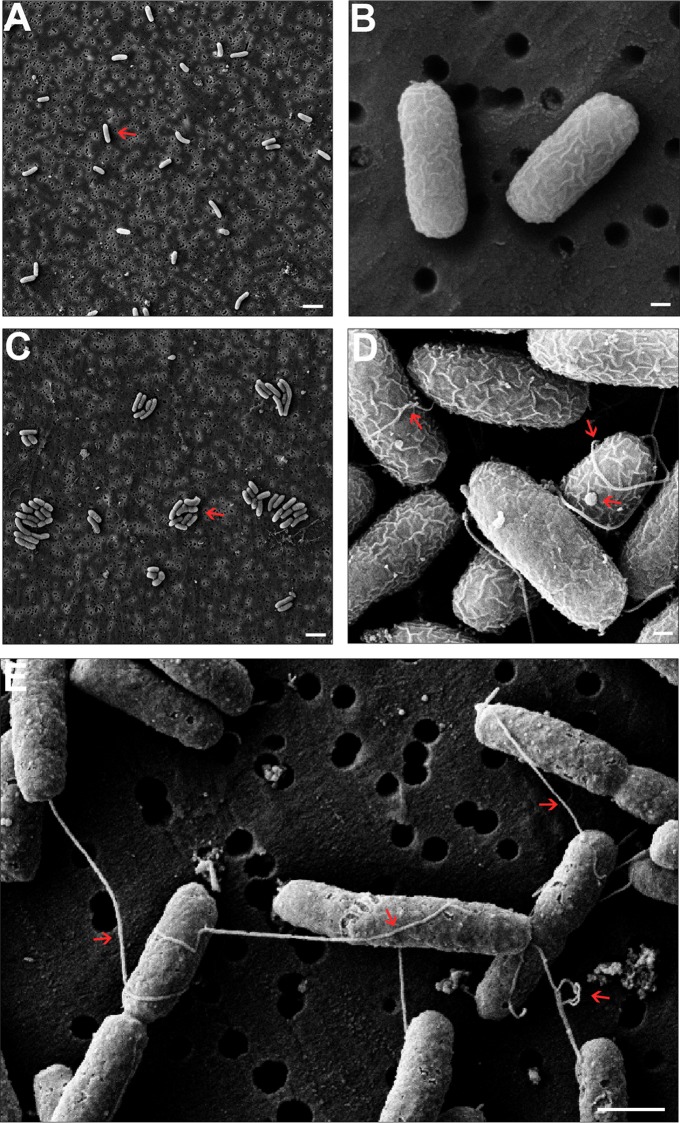FIG 3.
SEM analysis reveals that 2D6 IgA treatment induces membrane wrinkling, blebbing, and flagellar tethering. Mid-log-phase cultures of V. cholerae O395 were treated with Sal4 IgA (A and B) or 2D6 IgA (C to E). Cells were collected at 20 min (A and C), 60 min (B and D), or 120 min (E) following antibody treatment and processed for SEM, as described in Materials and Methods. (A and B) Control-treated V. cholerae cells were evenly distributed across the porous filter membrane, and there was no evidence of bacterial agglutination or clumping. (C to E) Compared to control cells, 2D6 IgA-treated V. cholerae cells were aggregated (compare arrows in panels A and C) and were notably more wrinkled (compare panels B and D). In addition, following 60 min (D) and 120 min (E) of treatment with 2D6 IgA, there was notable flagellum-flagellum cross-linking, flagellar entanglement with neighboring bacterial bodies, and even flagellar knotting (arrows). (D) V. cholerae cells treated with 2D6 IgA were also associated with an increased number of surface blebs (arrow). Note that TCP was not observed in these images, because the bacteria were cultured under non-toxin-inducing conditions. Scale bars: panels A and C, 2 μm; panels B and D, 200 nm; panel E, 1 μm.

